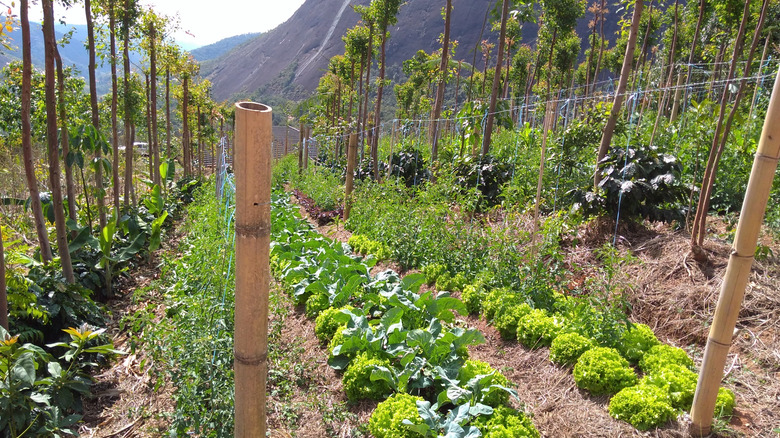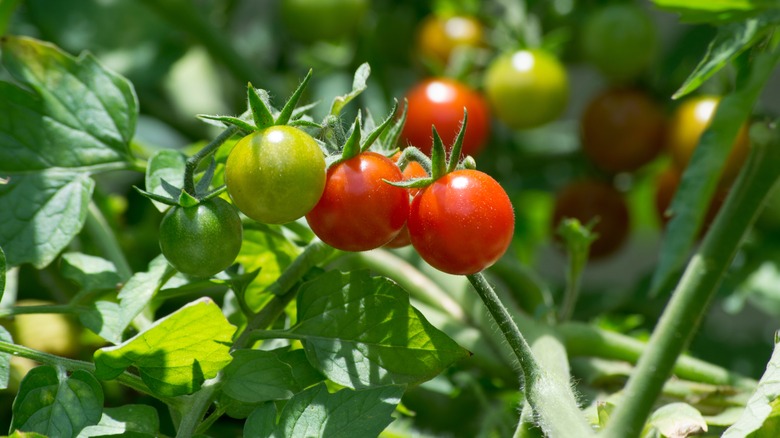Why Trees And Forests May Be Key To A Stronger Food System
Commercial agriculture has an outsized impact on our environment. Our World In Data reports that agriculture takes up 50% of the world's habitable land, with livestock using the majority of it. Even though agriculture uses such a vast amount of landmass, the diversity of food grown is relatively small. According to The Lancet, there are only 15 crops that produce nearly all of humankind's calorie consumption — and nearly 50% of those are rice, wheat, or maize.
Agroforestry, which integrates trees and shrubs with animal grazing land and crops, is a farming method growing in popularity that protects farmland from erosion, cuts back on chemical and water use, and adds biodiversity to farmland (via the U.S. Department of Agriculture). This leads to healthier, more fertile soil without reliance on commercial fertilizer and keeps the land resilient in the face of natural disasters (per Farm Together). It also leads to healthier humans.
Research Outreach points out that forests provide a diverse bounty. From picking fruit and nuts from trees to foraging for fungi and edible plants to hunting wild game, these nutrient sources are rich and varied. The Lancet explains that food taken from trees had higher concentrations of vitamins A and C than any other sources. CNN notes that meat from wild game is leaner, and lower in total saturated fat while having more polyunsaturated fat than commercially grown animals.
How forests make a more resilient food system
Agroforest practices not only lead to healthy humans but also a healthy environment. Deforestation accounts for a rise in greenhouse gasses, having a negative impact on climate resilience. Commercial agriculture, with its diesel-powered heavy equipment and reliance on chemical treatments to grow food and keep it pest-free, is a greenhouse gas offender (per Research Outreach).
The Climate Institute points to the myriad of environmental benefits of agroforestation. Agroforest soil captures more organic carbon than even traditional forests, meaning less carbon is escaping into the atmosphere while also enriching the dirt. Further, soil that's gone fallow on farmlands can be rebuilt through reforestation practices. Dead organic matter from the trees and other forest plants is recycled into the soil, making a natural compost that enriches it. Tree roots run deeper into the soil when they are competing with crops, which enhances rainwater capture, taking pressure off strained water sources.
While one of the drawbacks of agroforestry is time — it takes a while for forests to mature — there's growing interest in the for-profit sector. Mongabay reports that researcher Ernst Götsch believes that agroforestry practices will see a profit increase of eight times over conventional practices. Forest Finance founder Harry Assenmacher, who invests in agroforestry farms, anticipates a four to seven percent return on his investments (via Revolve). These for-profit catalysts are fueling an interest in sustainable farming practices.

